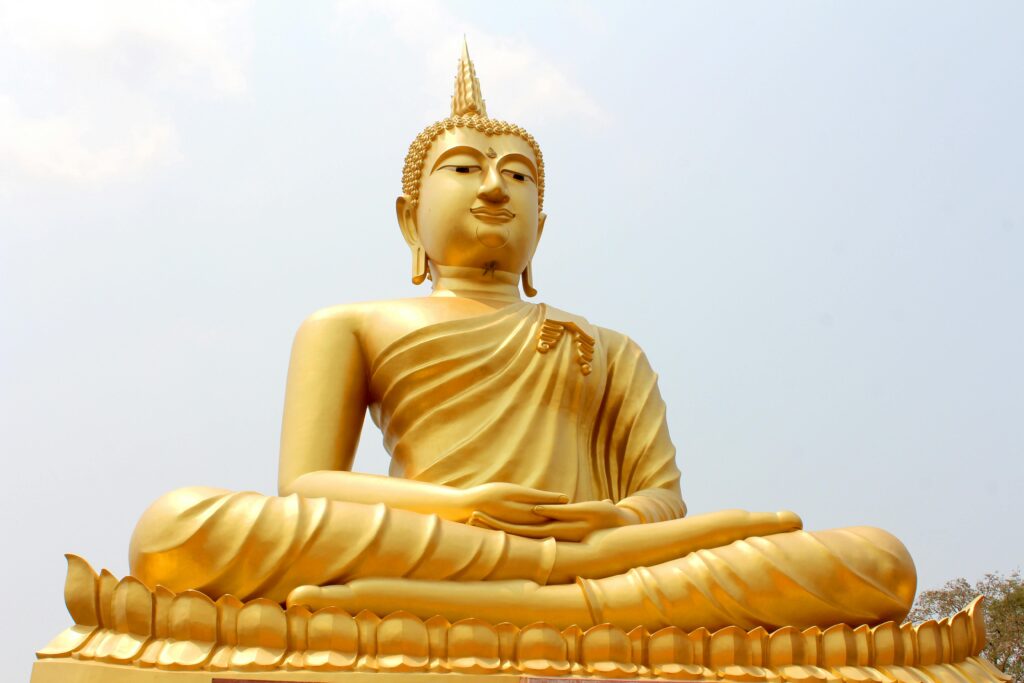
India, the birthplace of Buddhism, is home to a rich tapestry of festivals that honor the life and teachings of Siddhartha Gautama—the Buddha. Buddhist Festivals in India attract pilgrims, monks, scholars, and travelers from around the world, offering a unique window into one of the world’s most peaceful and profound spiritual traditions These festivals are not just religious observances; they are immersive experiences that blend devotion, philosophy, art, and community..
📍 The Significance of Buddhist Festivals
Buddhist festivals in India are deeply rooted in the historical milestones of the Buddha’s life—his birth, enlightenment, first sermon, and Mahaparinirvana. They also reflect the diverse traditions within Buddhism, including Theravāda, Mahāyāna, and Vajrayāna schools. These celebrations foster spiritual reflection, ethical living, and cultural exchange, often held at sacred sites like Bodh Gaya, Sarnath, Kushinagar, and Ladakh.
🌕 1. Buddha Purnima (Vesak): The Triple Blessed Day
Buddha Purnima, also known as Vesak or Buddha Jayanti, is the most important Buddhist festival in India. Celebrated on the full moon day in April or May, it marks the birth, enlightenment, and death of Gautama Buddha.
Key Highlights:
- Location: Bodh Gaya, Sarnath, Kushinagar, and Delhi.
- Rituals: Chanting of sutras, meditation sessions, offerings of flowers and lamps, and distribution of food and clothes to the needy.
- Cultural Events: Dhamma talks, exhibitions, and peace marches.
This festival draws thousands of pilgrims and is recognized by UNESCO as a global day of peace and compassion.
🏔️ 2. Hemis Festival: Ladakh’s Vibrant Vajrayāna Celebration
Held in Hemis Monastery, the largest and wealthiest monastery in Ladakh, the Hemis Festival celebrates the birth of Guru Padmasambhava, who introduced Vajrayāna Buddhism to Tibet.
Key Highlights:
- Location: Hemis Monastery, Ladakh.
- Rituals: Masked dances (Cham), sacred music, and thangka unveilings.
- Cultural Events: Traditional Ladakhi food, handicrafts, and folk performances.
The festival is a visual and spiritual spectacle, attracting both domestic and international tourists.
🕯️ 3. Losar: Tibetan New Year
Losar, meaning “New Year,” is celebrated by Tibetan Buddhist communities in India, especially in Dharamshala, Sikkim, and Arunachal Pradesh.
Key Highlights:
- Location: McLeod Ganj, Tawang, Gangtok.
- Rituals: House cleaning, offering rituals, prayer flag hoisting, and family feasts.
- Cultural Events: Masked dances, fire rituals, and community gatherings.
Losar blends spiritual renewal with cultural joy, marking the beginning of a new lunar year.
🛕 4. Asalha Puja (Dhamma Day): First Sermon Celebration
Asalha Puja, also known as Dhamma Day, commemorates the Buddha’s first sermon at Sarnath, where he taught the Four Noble Truths and the Eightfold Path.
Key Highlights:
- Location: Sarnath, Varanasi.
- Rituals: Recitation of the Dhammacakkappavattana Sutta, meditation, and almsgiving.
- Cultural Events: Dhamma talks and community service.
This festival emphasizes the importance of wisdom and ethical living in Buddhist practice.
🪔 5. Kathina Ceremony: Robe Offering Festival
Kathina is a Theravāda Buddhist festival where laypeople offer robes and other necessities to monks at the end of the rainy retreat (Vassa).
Key Highlights:
- Location: Bodh Gaya, Sanchi, and Theravāda centers in Maharashtra and Karnataka.
- Rituals: Robe offerings, merit-making, and communal meals.
- Cultural Events: Chanting, storytelling, and gratitude ceremonies.
Kathina strengthens the bond between the monastic and lay communities.
🧘 6. Ullambana: Festival of Compassion for Ancestors
Ullambana, also known as the Ghost Festival, is celebrated to honor ancestors and relieve suffering in the spirit world.
Key Highlights:
- Location: Buddhist centers in Maharashtra, Bihar, and Ladakh.
- Rituals: Offerings to monks, prayers for departed souls, and food donations.
- Cultural Events: Storytelling based on the Ullambana Sutra.
This festival reflects the Buddhist emphasis on compassion and interdependence.
🏞️ 7. Nyingma Monlam Chenmo: Great Prayer Festival
Held by the Nyingma school of Tibetan Buddhism, this festival is a large-scale prayer gathering for world peace and spiritual awakening.
Key Highlights:
- Location: Bodh Gaya.
- Rituals: Chanting of prayers, mandala offerings, and teachings by senior lamas.
- Cultural Events: Art exhibitions, community service, and interfaith dialogues.
It’s one of the most spiritually charged Buddhist festivals in India.
🧘♂️ 8. Drukpa Tsechu: Celebrating Guru Padmasambhava
Celebrated by the Drukpa lineage, Drukpa Tsechu honors the life and teachings of Guru Padmasambhava.
Key Highlights:
- Location: Druk Amitabha Mountain, Ladakh, and Himachal Pradesh.
- Rituals: Sacred dances, teachings, and empowerment ceremonies.
- Cultural Events: Eco-awareness campaigns and youth-led community service.
This festival blends spirituality with social responsibility.
🎨 Cultural Impact of Buddhist Festivals
Buddhist festivals in India are more than religious observances—they are cultural phenomena:
- Art and Craft: Thangka painting, prayer flags, and ritual masks.
- Cuisine: Vegetarian feasts, butter tea, and monastery meals.
- Music and Dance: Chanting, drumming, and Cham dances.
These festivals preserve and promote India’s Buddhist heritage while fostering global connections.
🌍 Global Participation and Tourism
India’s Buddhist festivals attract visitors from:
- Sri Lanka, Thailand, Myanmar: Theravāda pilgrims.
- Tibet, Bhutan, Nepal: Vajrayāna practitioners.
- Japan, Korea, China: Mahāyāna followers.
- Western countries: Mindfulness and cultural tourism.
Tourism boards and spiritual organizations offer curated festival tours, combining pilgrimage with cultural immersion.
🧳 Travel Tips for Festival-Goers
- Best Time to Visit: April–May for Buddha Purnima; July–August for Hemis and Asalha Puja; February for Losar.
- What to Pack: Modest clothing, reusable water bottles, meditation cushions, and spiritual journals.
- Etiquette: Respect monastic customs, maintain silence during rituals, and avoid photography in sacred zones.
Planning ahead ensures a respectful and enriching experience.
✨ Conclusion: Celebrating the Dharma in Every Season
Buddhist festivals in India are timeless invitations to pause, reflect, and rejoice. Whether you’re meditating under the Bodhi Tree, watching masked dances in Ladakh, or chanting sutras in Sarnath, each celebration offers a moment of connection—with the Dharma, with community, and with yourself. As Buddhism continues to inspire peace and compassion worldwide, India remains its living heart—where festivals become pathways to awakening.




